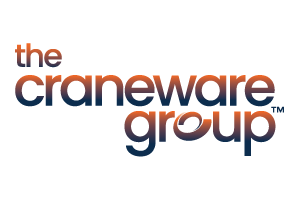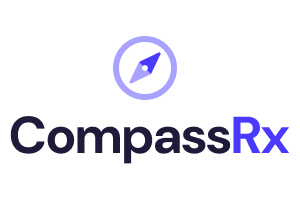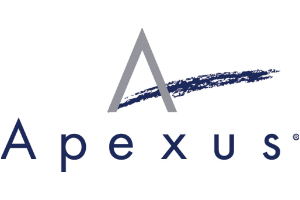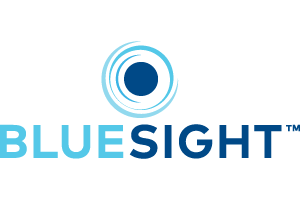
SPONSORED CONTENT

TIP: Optimize NDC selection by evaluating utilization, not just 340B accumulations.
When selecting a preferred National Drug Code (NDC) within a medication grouping (e.g., lisinopril 10 mg), many covered entities (CEs) focus solely on available 340B accumulations. While important, this can lead to suboptimal choices if historical utilization across all account types (340B, GPO, WAC) is not also considered.
Instead, analyze utilization patterns to calculate a weighted price for each NDC based on how often it’s used under each pricing category. This ensures you’re selecting the NDC that offers the best net value—not just the most 340B savings in isolation.
Additional considerations:
- It may still make sense to purchase the remaining 340B accumulations before transitioning to a new NDC.
- Factor in operational impacts—e.g., unit dose vs. bulk bottle, vial vs. syringe, or alignment with committed contracts.
- With most CEs managing over 4,000 medication groupings, manual optimization is not scalable.
That’s where a tool like Trulla Procurement adds value. Trulla automates NDC optimization by factoring in historical utilization, contract pricing, and operational preferences—giving pharmacy buyers data-driven recommendations at scale.

Matt Parker is Vice President of Trulla at SpendMend. He can be reached at mparker@spendmend.com


SPONSORED CONTENT

TIP: Align charge capture and 340B strategy to unlock long-term sustainability.
In today’s margin-pressured environment, 340B savings alone aren’t enough. To build a truly sustainable operation, hospitals and other covered entities (CEs) should align their 340B programs with broader reimbursement and charge capture strategies. That means ensuring accurate documentation, optimizing coding workflows, and validating charges in real time.
CEs that unify 340B tracking with enterprise-level revenue integrity efforts are better equipped to reinvest savings, offset shortfalls, and expand access to care—even in high-need communities.
At The Craneware Group, we see this alignment as a critical differentiator for safety net hospitals and other 340B providers aiming to improve financial sustainability while maintaining compliance. It’s not just about protecting 340B—it’s about protecting your mission.

Chris Boles is Senior Vice President of Account Management at The Craneware Group. He can be reached at CBoles@craneware.com


SPONSORED CONTENT

TIP: Don’t overlook in-house pharmacy capture as a way to maximize your 340B program savings.
Today, fewer than 25% of covered entities are capturing even half of their eligible prescriptions—leaving significant savings and patient impact on the table. With looming changes to the 340B program threatening these critical resources, improving capture has never been more urgent.
Many covered entities are aware of the challenge, yet fewer than 15% have a clear strategy to address it. Patients often don’t understand the benefits of using 340B pharmacies, and providers rarely have the time or tools to educate them during visits.
Our AI-powered analytics and patient engagement tools identify prescription leakage and help you recover it—efficiently and effectively. By guiding patients to your pharmacy, you not only boost adherence and outcomes but also drive sustainable 340B savings.
Reach out to us at hello@compassrx.com to learn more.

Ali Farzad is CEO of CompassRx. He can be reached at ali@compassrx.com


SPONSORED CONTENT

TIP: Use quarterly eRx data analysis to identify contract pharmacy expansion opportunities, including independent pharmacies.
Every quarter, covered entities should have their TPAs looking for contract expansion opportunities, including independent pharmacies. Covered entities should pull eRx data to see where their patients are filling prescriptions, helping identify changes in patient pharmacy choices and protect 340B savings from decreasing.

Justin Rolling is President at CaptureRx. He can be reached at justin.rolling@capturerx.com


SPONSORED CONTENT

TIP: Entities using third-party administrators (TPAs) should understand system functionality and strengthen oversight with regular audits to reduce compliance risks.
As the 340B program becomes more complex, many covered entities (CEs) rely on TPAs to manage essential operations. However, using a TPA for critical compliance responsibilities demands active oversight above mere delegation. CEs should have a thorough understanding of their TPA settings to ensure that they accurately reflect the organization’s 340B policies and procedures—an essential component of program compliance. This responsibility extends beyond core configuration settings to include any value-added services provided by the TPA. Rather than letting configurations passively run in the background after initial implementation, entities should conduct routine audits to validate alignment, identify compliance issues early, and reinforce internal oversight efforts. Active engagement with TPA settings is critical in safeguarding 340B program integrity.
In response to the need for stronger TPA management, the Apexus Advanced 340B Operations Certificate Program has developed an exclusive tool: the TPA Maintenance Toolkit, available soon to all program enrollees and 340B ACEs via the Operations Certificate Exclusive Tools course in the Apexus Education Portal. Designed by 340B experts, this resource helps bridge the gap between policy and practice with practical prompts that make complex oversight more manageable. It’s one of many tools available exclusively through the program—alongside a stakeholder contact log, a product mapping aid, and others. These tools are designed to simplify your role, support compliance, and help you confidently lead 340B operations.
Enroll in the certificate program today to advance your 340B knowledge and unlock practical, exclusive tools that help you lead 340B operations confidently.
Have questions? Contact us at 340BCertificate@apexus.com.


SPONSORED CONTENT

TIP: Don’t Leave Compliance to Chance – Audit 100% of Your 340B Transactions.
With sweeping changes proposed in the latest presidential executive order, a surge in manufacturer-led audits, more states enacting provider reporting laws, and heightened scrutiny of 340B in Washington, D.C., the regulatory environment is more challenging and unpredictable than ever. Health systems and grantees must ensure their 340B programs are prepared for increased regulations and oversight.
In the face of a tumultuous legislative and regulatory landscape, Bluesight’s new 2025 Hospital Pharmacy Operations Report highlights the growing need for increased self-auditing of 340B transactions to safeguard organizations. Spot checks and sample audits may have been sufficient in the past, but they now leave 340B Covered Entities exposed to compliance risks, lost savings, and potential penalties.
Organizations must move beyond outdated, manual auditing strategies to protect their 340B program and ensure long-term sustainability. A 100% audit approach isn’t just ideal—it is essential. Relying on sample-based or periodic audits is demanding on resources, limits the team’s agility, and ultimately exposes teams to increased risk. A 100% audit empowers teams to identify issues in real time, take proactive action, and maintain confidence in program compliance, regardless of how the landscape evolves.
Simplify continuous compliance as your program grows and regulations become increasingly complex. Bluesight’s 340B Compliance Solution, 340BCheck, consolidates your 340B compliance into one location, providing hospitals and grantees with complete oversight and 100% auditing capabilities. Integrate disparate data sources, monitor compliance, and validate every transaction to stay HRSA audit-ready – all to scale your program and reduce financial risks.

Lauren Forni, PharmD, MBA, is Bluesight’s Senior Director of Clinical Strategy. She can be reached at lauren.forni@bluesight.com


SPONSORED CONTENT

TIP: Prioritize referral consistency over volume.
When it comes to 340B referral capture, it’s tempting to focus on maximizing the number of referrals processed — but long-term success hinges on consistency and compliance, not just volume. Prioritizing consistent documentation, eligibility validation, and proper referral workflows across all referrals creates a strong, defensible program foundation.
By ensuring every referral is not only eligible, but properly documented, covered entities reduce the risk of diversion, duplicate discounts, and audit findings — all of which can threaten program savings. Over time, a disciplined, compliance-first approach can increase sustainable savings, because revenue is built on a stable foundation rather than risk-laden claims that may later be clawed back or disqualified.
Develop a system for how you will manage referrals from the start. Evaluate whether you have the internal bandwidth to handle it effectively, or whether partnering with an experienced vendor could help maximize compliance and results.

Harrison Garrett is director of 340B Solutions at Cervey. He can be reached at hgarrett@cervey.com


SPONSORED CONTENT

TIP: Ensure behavioral health medications are fully integrated into your 340B strategy to maximize patient access and program savings.
As behavioral health needs continue to surge—particularly in underserved communities—community health centers and other 340B providers must ensure their 340B strategy is inclusive of mental health and substance use treatment medications. These include antidepressants, anti-anxiety medications, and medications for opioid use disorders, all of which are essential for holistic patient care. By intentionally incorporating behavioral health prescribing into your 340B workflows, organizations can dramatically expand access to life-saving treatments while generating meaningful savings.
Start by analyzing prescribing data and visit types to confirm which behavioral health encounters and medications are eligible under your current 340B setup and at what rate these visits are occurring. Then, work with your in-house pharmacy or contract pharmacy network to ensure these medications are included in your purchasing and dispensing strategy. The use of injectable medications for behavioral health has been on the rise in recent years. These injectables offer increased medication compliance and more stable effects in most cases. In-clinic injectables come with their own set up complexities and require a solid process to ensure these claims are captured correctly. Finally, don’t overlook compliance—behavioral health drugs must meet all program requirements, including accurate documentation of eligible encounters and providers, especially under HRSA and manufacturer scrutiny.
At Ravin Consultants, we specialize in optimizing 340B programs for high-impact areas like behavioral health. From analyzing prescribing patterns and patient eligibility to developing compliant workflows and expanding pharmacy access, our team partners with health centers and other covered entities to ensure they’re leveraging every opportunity 340B provides—without compromising compliance. We also help you stay ahead of changing regulations and manufacturer restrictions so you can focus on what matters most: delivering quality behavioral healthcare to your community.

Robert Ferraro is Principal and Chief Operating Officer at Ravin Consultants. He can be reached at robert@ravinconsultants.com


SPONSORED CONTENT

TIP: Take time to focus on these three important fundamentals of 340B program compliance and integrity.
Update Prescriber Panels
Maintaining an accurate prescriber panel helps ensure only eligible prescriptions are captured under the 340B program. Regular updates help prevent compliance risks and optimize program savings.
- Conduct routine reviews of prescriber panels to ensure they include only actively employed or contracted providers.
- Verify that each prescriber meets eligibility requirements defined in your policies and procedures.
Ensure OPAIS Data Accuracy
The Office of Pharmacy Affairs Information System (OPAIS) serves as the official record for covered entities participating in 340B. Any inaccuracies can lead to compliance risks and potential disqualification from the program.
- Perform quarterly audits to verify that all entity locations, child sites, and contract pharmacy relationships are correctly listed in OPAIS.
- Confirm that contact information (Authorizing Official and Primary Contact), addresses, and covered entity details are accurate and up to date.
- Ensure your most recent Medicare Cost Report (MCR) is filed with CMS and sent to HRSA.
Review Policies and Procedures
Keeping policies and procedures current is essential for ensuring staff compliance and preparing for HRSA audits.
- Review and update policies at least annually.
- Ensure that policies cover key compliance areas, including patient eligibility, inventory management, duplicate discount prevention, and diversion mitigation.
- Apexus has policy and procedure templates that can be customized – you can also use them as a guide to compare with yours.
A strong 340B program starts with the basics. By proactively managing these areas, your organization can strengthen its 340B program compliance and performance.

Lori Schilling, Regional Manager at SunRx, can be reached at lschilling@sunrx.com


SPONSORED CONTENT

TIP: Master manufacturer refund challenges with actionable steps.
Managing manufacturer refunds in the 340B Drug Pricing Program can be complex, but with the right strategies, you can streamline the process and ensure compliance. Here are some tips to help you navigate common challenges:
- Allocate Resources Efficiently: When dealing with multiple manufacturers, determine whether an individual or a team will be managing the workload.
- Prepare Communications: Establish your good-faith process to resolve issues with manufacturers, including the communication protocol, self-disclosure letters, and repayment calculations. Resources such as the PVP Self-Disclosure to HRSA and Manufacturer Template are helpful when developing communications.
- Validate Historical Pricing: Ensure accurate refund calculations by validating historical drug pricing using resources such as your wholesaler or the Historical Purchase Report within the PVP secure website.
- Identify Manufacturer Contacts: Use resources like 340B OPAIS and Medicaid.gov to find necessary information.
- Streamline Payments: Processing multiple check/ACH payments can be cumbersome. Implement a system to manage these transactions efficiently.
- Use Apexus Experts: Take advantage of the Apexus Covered Entity Refund Service (CRS). CRS brings the expertise of Apexus in 340B compliance, analysis, project management, and reporting to standardize refunds. Streamline the process of refund calculation, documentation, and resolution.
By addressing these challenges proactively, you can enhance the efficiency and accuracy of your 340B program’s refund process. Regularly review and adjust your strategies to ensure ongoing compliance and optimization.
To learn more about the Covered Entity Refund Service, schedule a meeting with one of our experts today.

Chad Johnson, PharmD, MBA, 340B ACE, is Associate Principal, Covered Entity Refund Service at Apexus and can be reached at chad.johnson@apexus.com

*Sign up for news summaries and alerts from 340B Report


